Woodpeckers are a species of bird that is especially suited to wooded environments.
They have powerful bills that they use to chisel, peck, and tear away peel and bark in pursuit of insect food, to make holes in trees for breeding, and to interact with other species’ mates.
Woodpeckers are particularly fascinating due to their a strengthened, shock-absorbing cranium that absorbs the impact of repeated hits, along with a long, barbed tongue that is used to stab and remove bugs.
Across New England, there are seven types of woodpeckers.
For the next time, you see or listen to any of these species of birds, here is the checklist of the New England Woodpeckers, as well as some photographs and intriguing information!
| Image | Name |
|---|---|
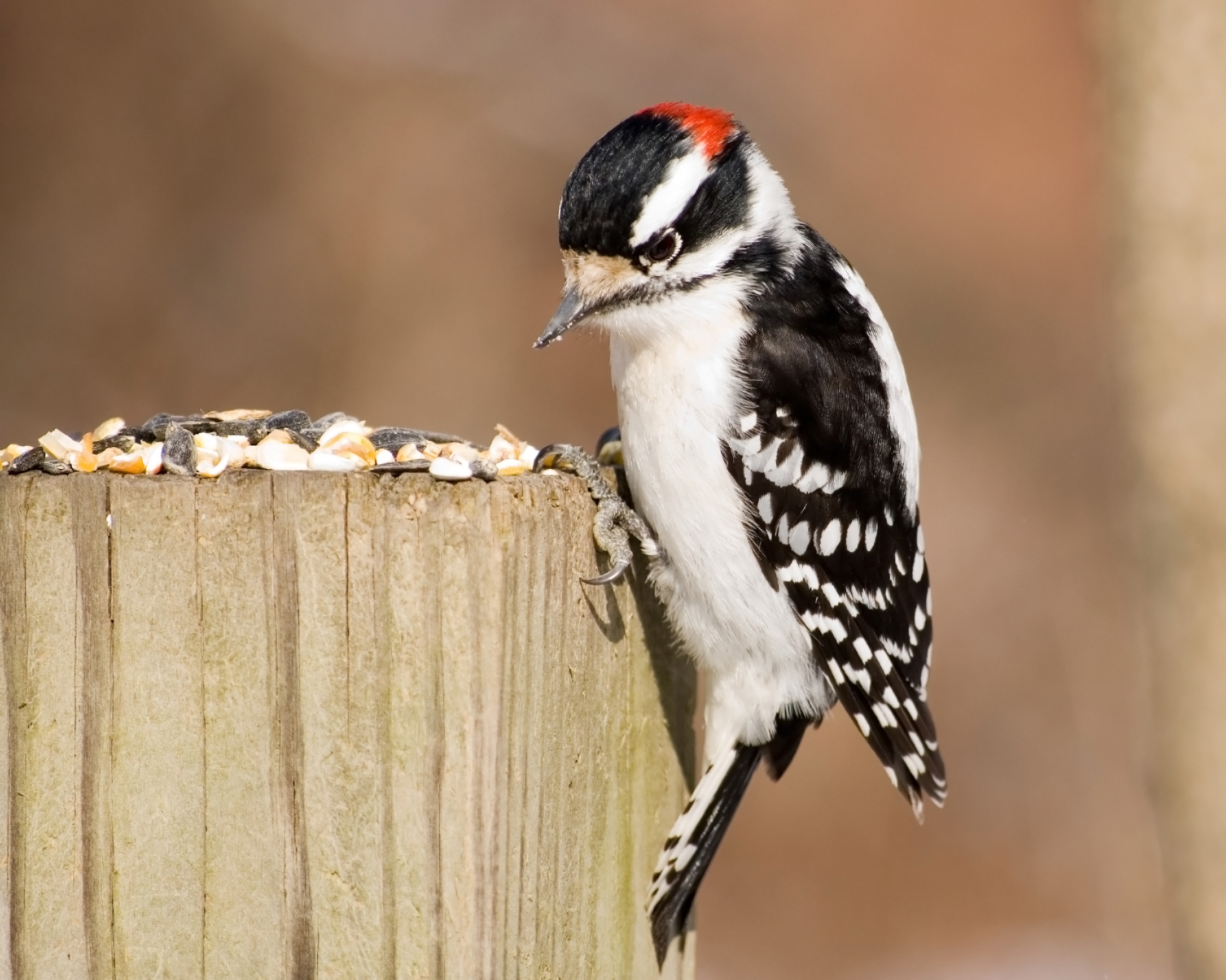 | Downy Woodpecker |
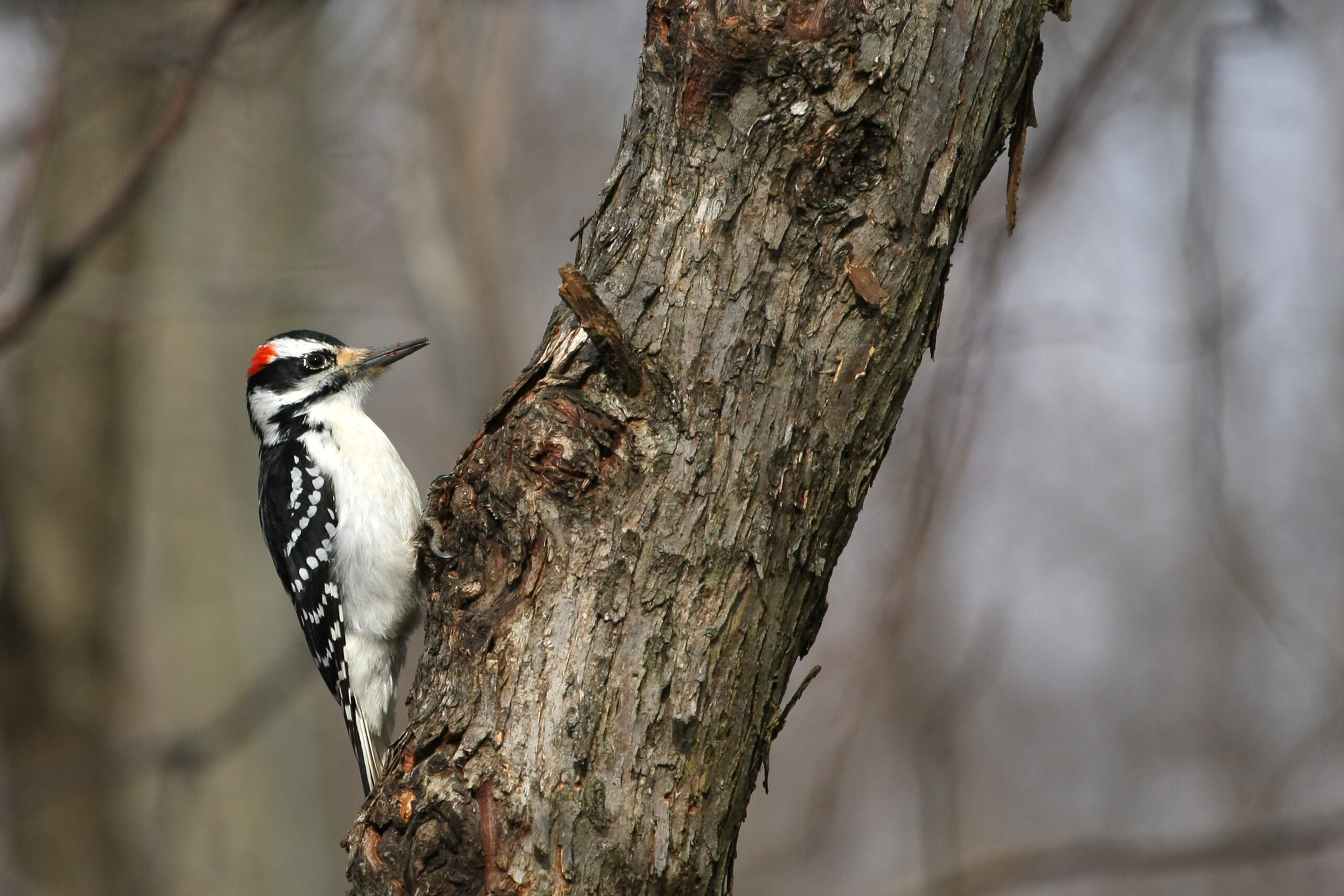 | Hairy Woodpecker |
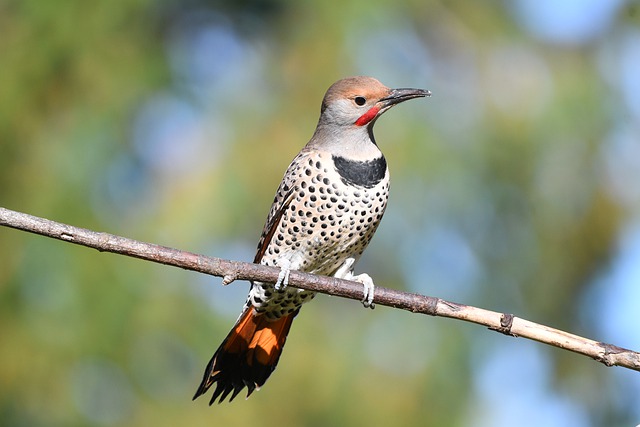 | Northern Flicker |
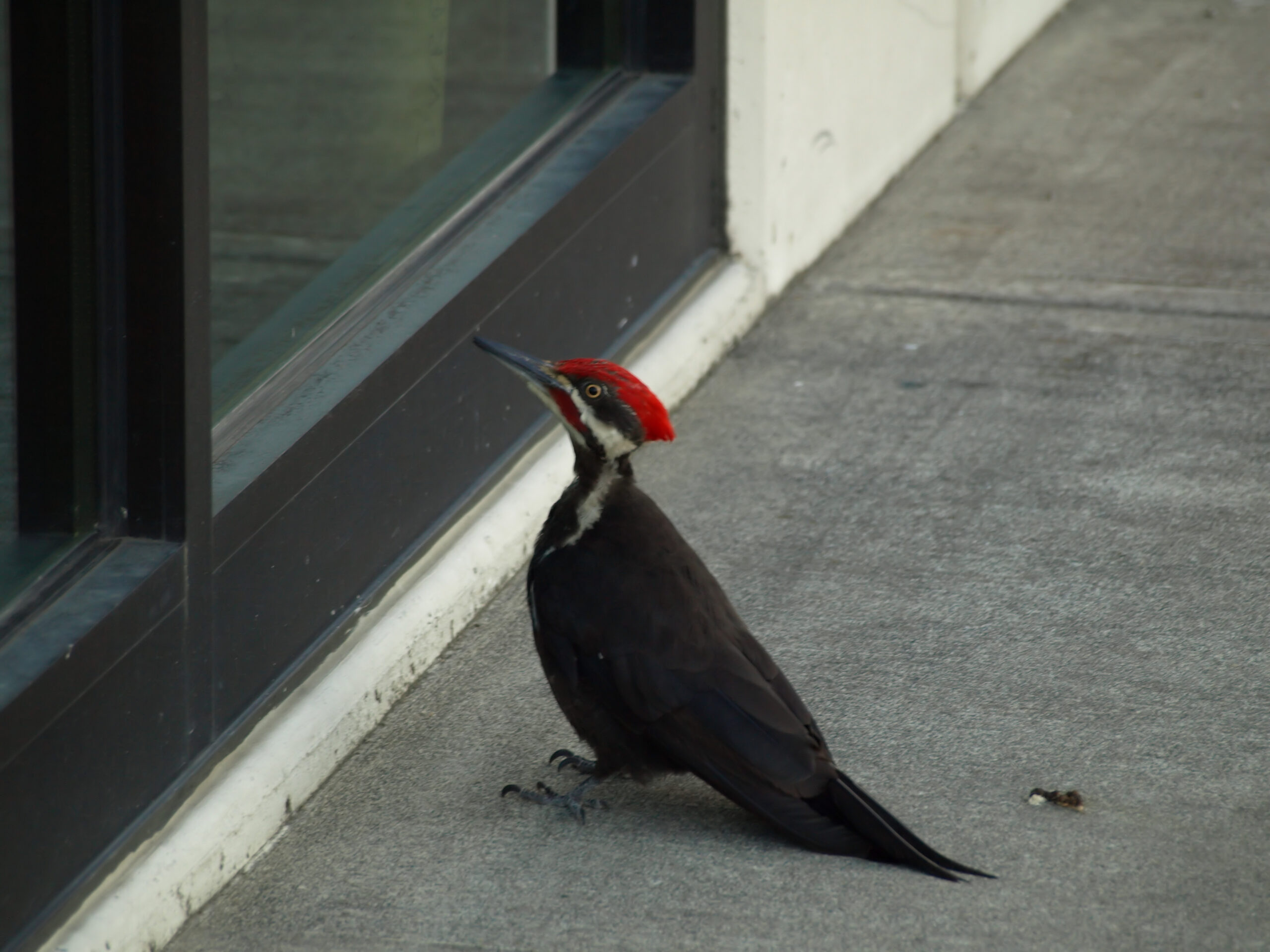 | Pileated Woodpecker |
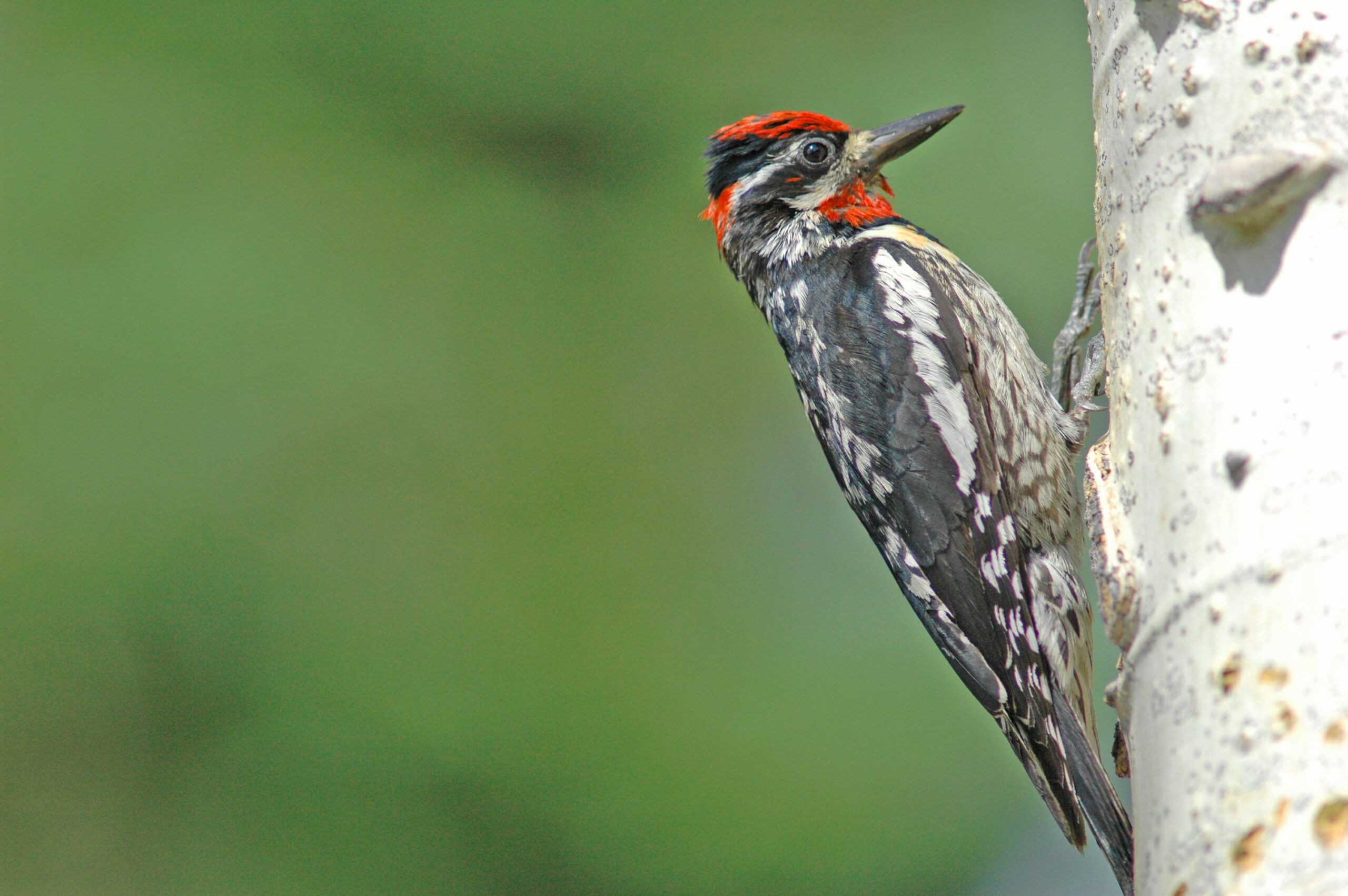 | Yellow-Bellied Sapsucker |
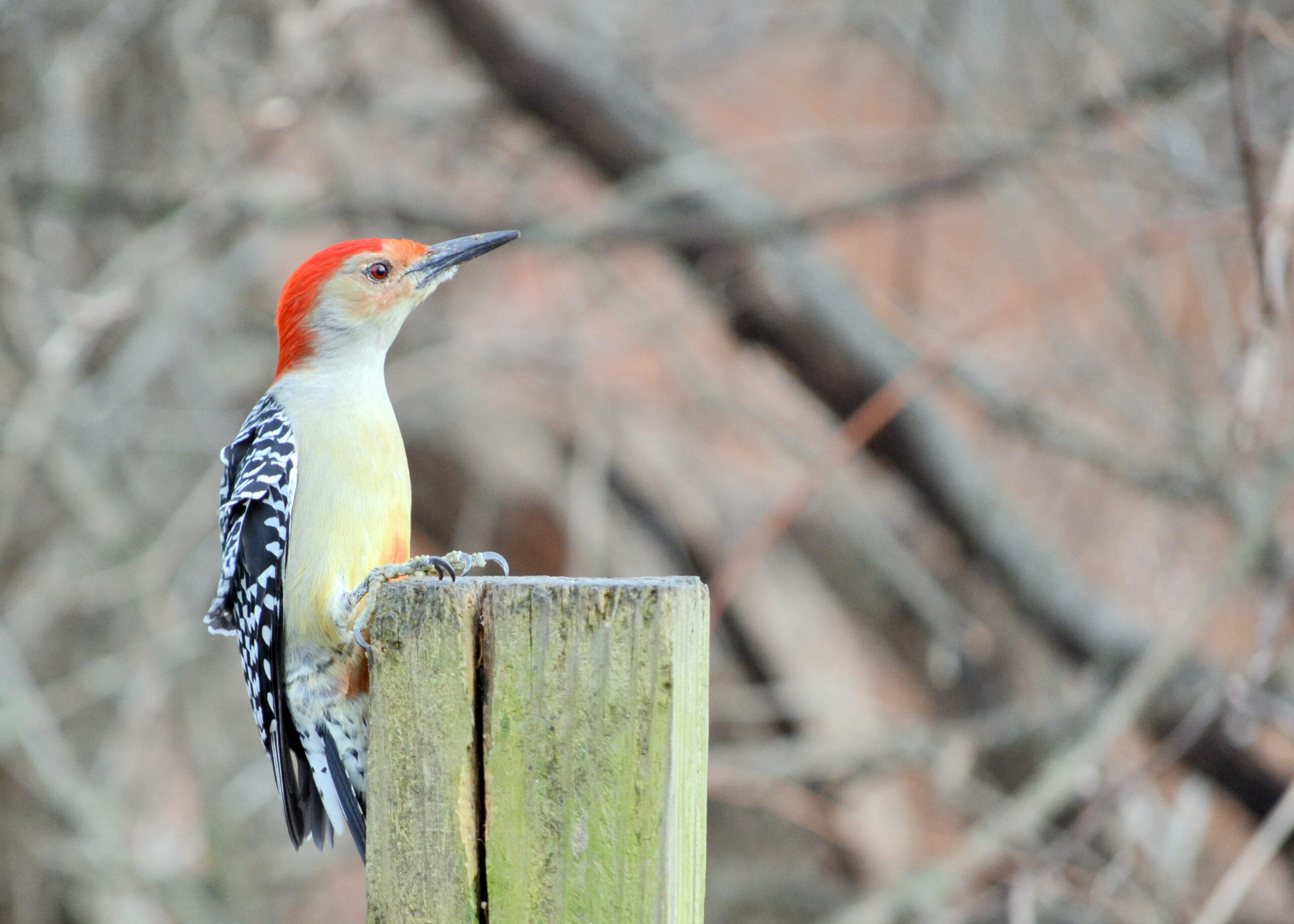 | Red-Bellied Woodpecker |
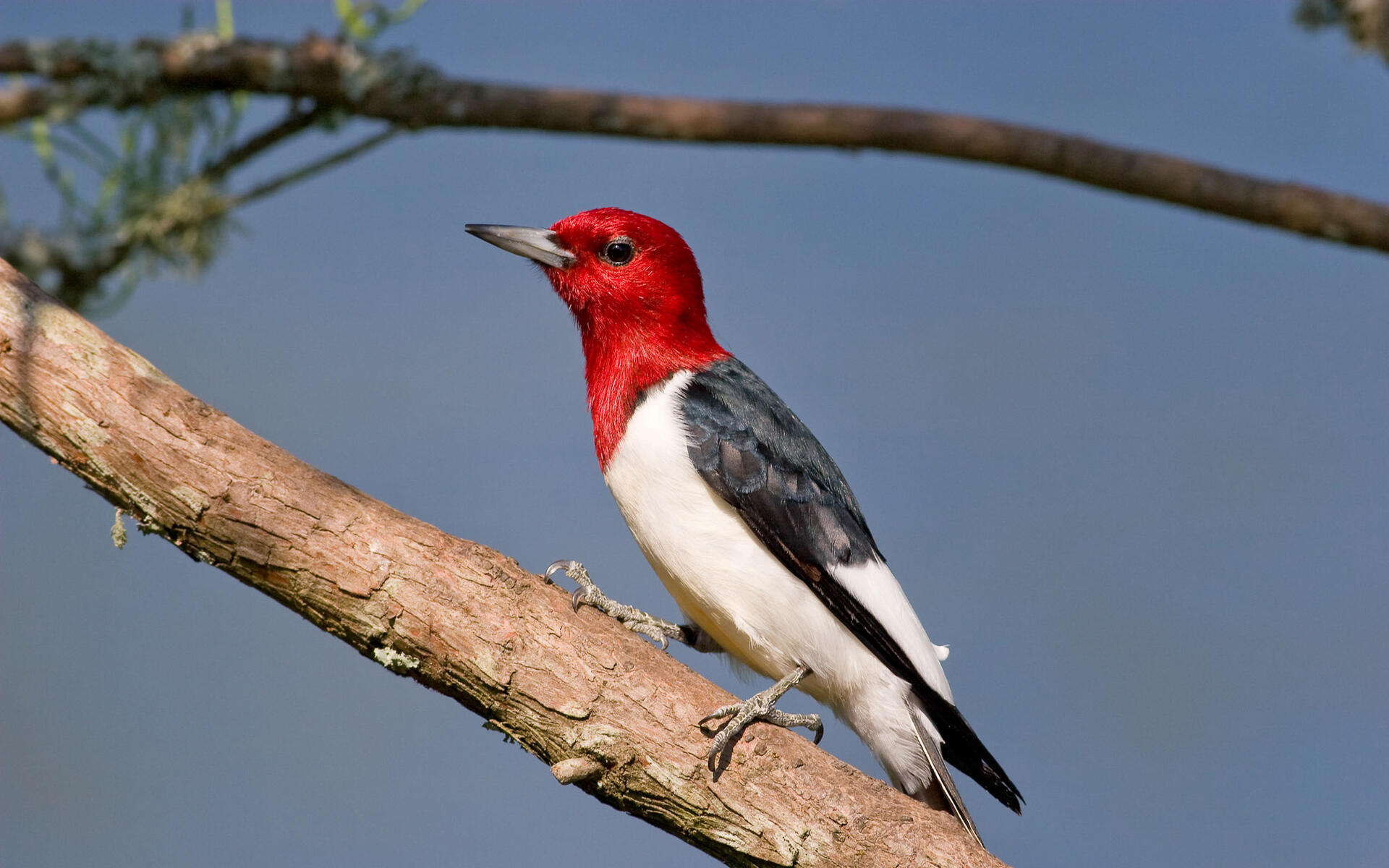 | Red-Headed Woodpecker |
Types of Woodpeckers in New England
1. Downy Woodpecker

The Downy Woodpecker has been the tiniest and most abundant woodpecker across New England, living almost everywhere there are trees.
It gets its name from the fluffy texture on its own back, and locals refer to them as “downies.”
They feature a unique black and white striped design along the middle of their back, as well as large horizontal bands on their wings. Males and females have quite varied markings, with males having a bright red marker on the rear of their forehead.
This woodpecker devotes a lot of its time climbing to tree branches and trunks. They, like other woodpeckers, possess zygodactyl feet, which means they feature two toes that face forward as well as two toes that face back, as opposed to most bird species, which do have three front and one behind.
This permits them to effectively stick to the tree in pursuit of invertebrates. Their tiny size helps them forage since they can creep all the way up to the tops of smaller trees that other woodpeckers are also too hefty to reach.
| Scientific name | Picoides pubescens |
| Height | 5.6 to 7.2 inches |
| Weight | 0.76 to 0.98 ounces |
2. Hairy Woodpecker
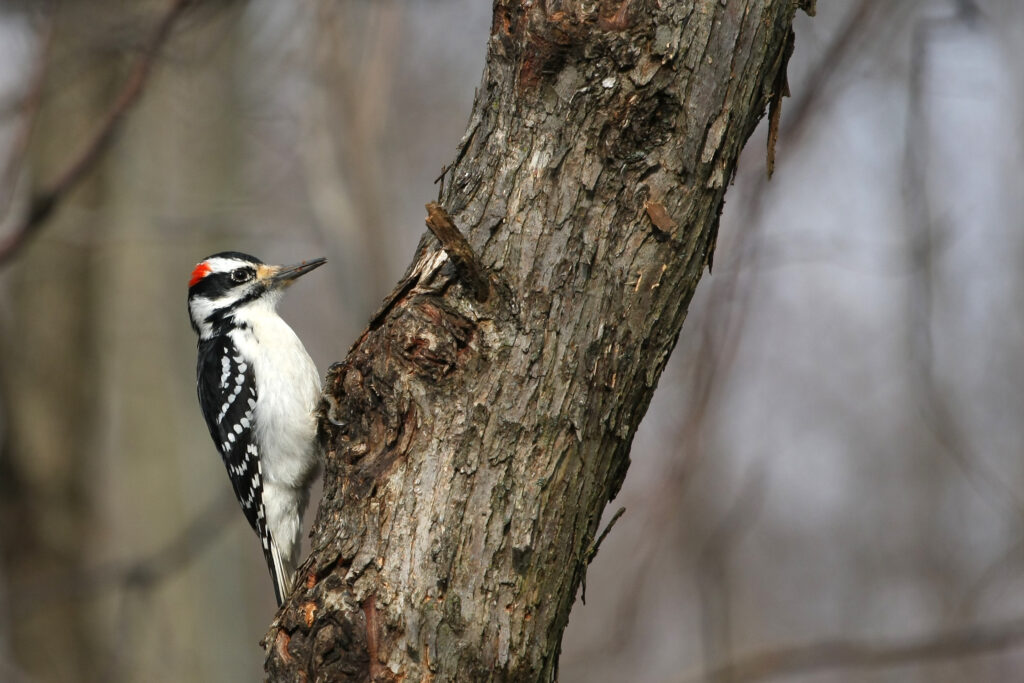
The Hairy Woodpecker, including its black and white band and red dot, looks similar to the Downy Woodpecker and is found across the state; however, they are two separate species!
The beak of the hairy is bigger than that of the Downy, and it also has all-white exterior tail feathers. It is also less frequent than the Downy, requiring older woodlands with older tree growth.
It primarily feeds on invertebrates, although it will also eat plant stuff.
This woodpecker is reported to follow the noises of Pileated Woodpeckers located in the same area in quest of easy food. The Hairy Woodpecker will inspect the deep trench and capture any bugs that might have been overlooked when the Pileated goes on.
They’ll also follow the paths of Sapsuckers, who have been seen drinking sap from boreholes left in the wood. They are thought to have a sweet tooth since they’ve been witnessed pecking through cane sugar for the fluid.
| Scientific name | Picoides villosus |
| Height | 9.1 to 9.6 inches |
| Weight | 0.75 to 0.98 ounces |
3. Northern Flicker

Northern Flickers are the only woodpeckers in New England that have gray-brown feathers instead of black and white. Its wings have been observed flashing yellow from underneath while flying.
It generally inhabits forests, marshes, and several urban areas, rendering it a regular appearance at bird feeders around the state.
This bird mostly feeds on bugs and other insects, although it will also eat fruits and berries when they’re plentiful. Because of its zygodactyl feet, this is among the most widely distributed species to see vertically going to walk up a tree’s trunk.
It also has rigid, sharp tail feathers that move independently at just the perfect angle to fulfill as a stability prop. It’s also among just three woodpecker species that are migrating, but it may be seen in New England all year.
| Scientific name | Colaptes auratus |
| Height | 7.1 to 15 inches |
| Weight | 4.2 to 4.4 ounces |
4. Pileated Woodpecker
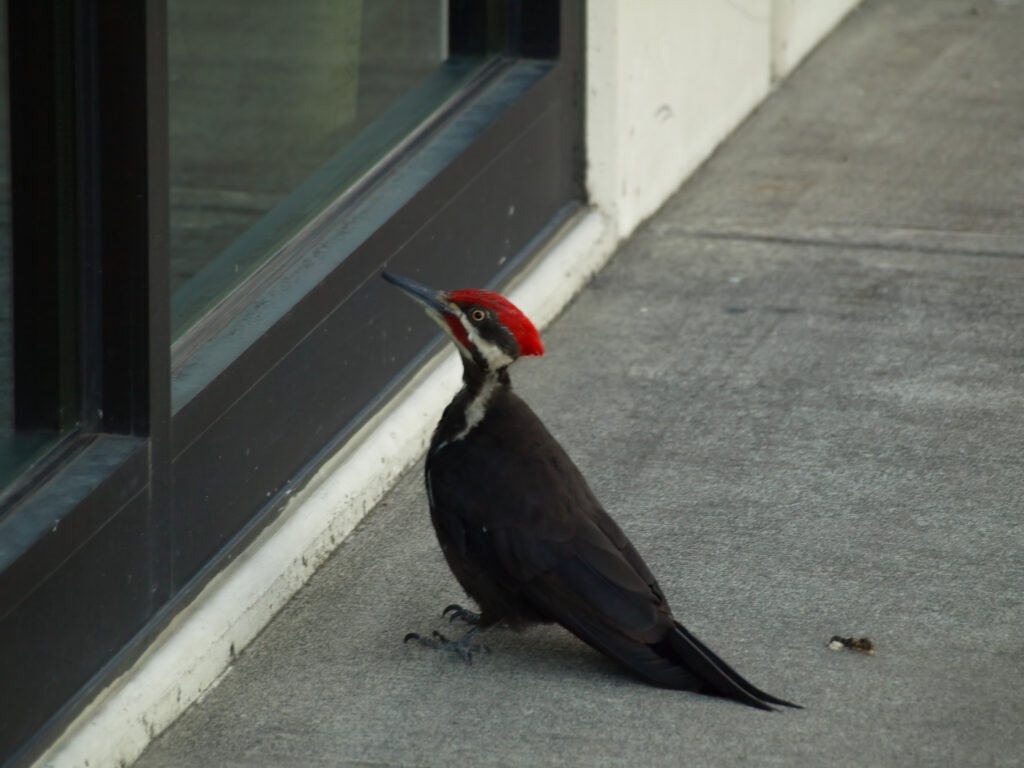
The Pileated Woodpecker will most certainly be the species that comes to mind when you mention “woodpecker.” This crow-sized bird does have a brilliant red crown and a stunning black body featuring white spots on the wings, giving it a sight to see regardless of how ubiquitous it is! It’s easy to see when there’s a Pileated Woodpecker around.
As the biggest woodpeckers throughout New England and North America, they create unique rectangular cavities in trees in quest of carpenter ants, their principal food source.
Unlike the popular belief that woodpeckers smash into living trees in quest of parasites, this woodpecker favors decaying and softer wood while looking for ant nests, even tearing apart stumps and large pieces of tree trunks.
This woodpecker also emits a peculiar drumming noise that slows, accelerates up, and then reduces again.
Habitat
It can be discovered in the coniferous woods of New England, but as people have encroached on its habitat, it has gradually moved closer to parkland and forest resources on the outskirts of big towns.
Fortunately, its species are steadily improving, but it is still endangered by forest removal and chemical usage.
| Scientific name | Dryocopus pileatus |
| Height | 15 to 19 inches |
| Weight | 8.7 to 14.1 ounces |
5. Yellow-Bellied Sapsucker
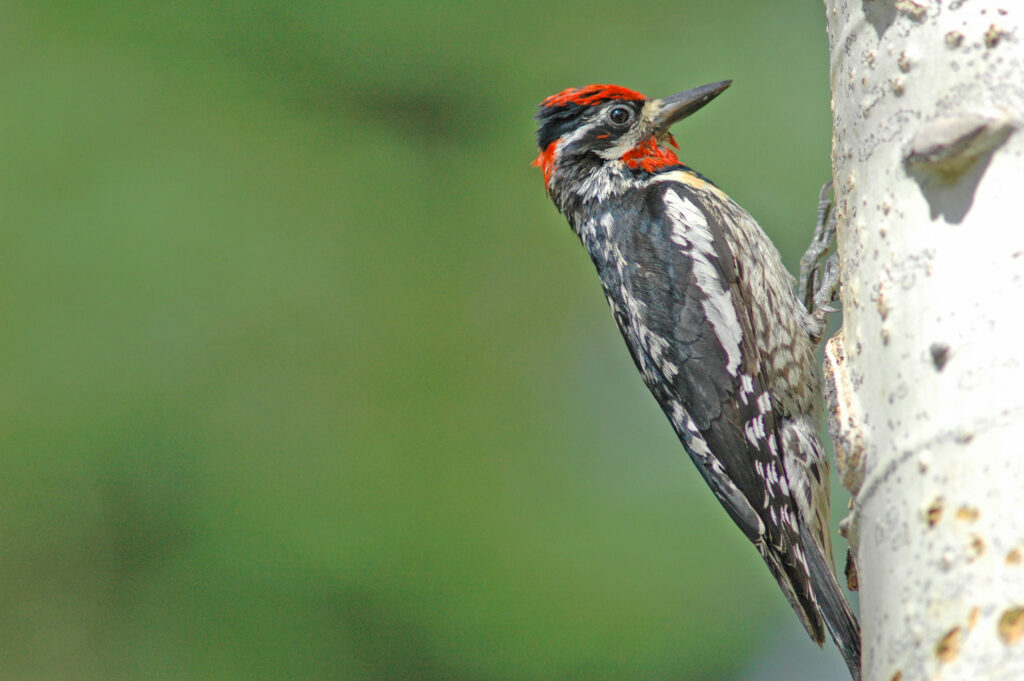
During migration, the Yellow-bellied Sapsucker may be observed across the state, and it has even been documented in the region mostly during winter, but it is more irregular.
It also has a breeding population mostly in the state’s western region. It is among the most talkative woodpeckers, becoming quite loud in the spring of cat-like cries and rapid drumming.
The Sapsucker, as even the name implies, drills deep holes in the bark of trees in carefully spaced rows, then comes to ingest the sap that seeps out.
This secretion also attracts various insect species, including ants, that feed on it. They still pick insects off tree stumps using a more “woodpecker” manner; however, they are not limited to it.
| Scientific name | Sphyrapicus varius |
| Height | 7.4 to 8.3 inches |
| Weight | 1.6 to 1.8 ounces |
6. Red-Bellied Woodpecker
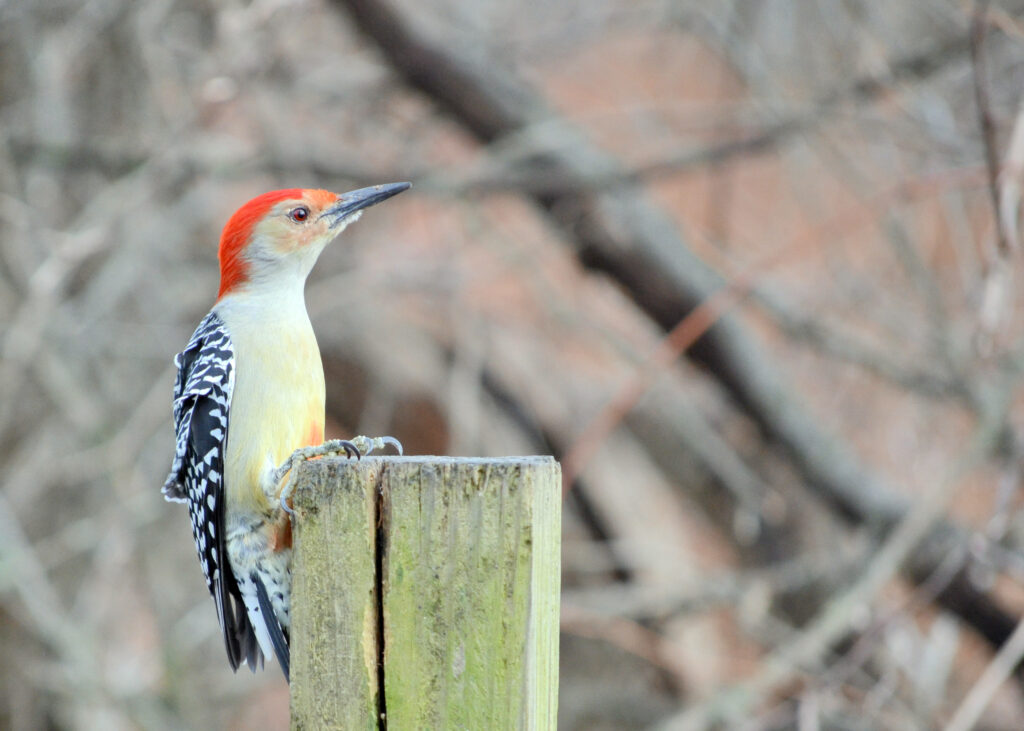
Only in the last twenty years has the Red-bellied Woodpecker gotten prevalent across New England. It may now be found across the state in a variety of woodlands and will often visit feeders.
The most conspicuous spot of red on this bird, contrary to its name, is located on its neck and head. To interact, they emit a range of noises, including trills, giggles, and constant pounding on trees.
This bird, like other woodpeckers, does have a tongue with a hooked end and sticky saliva, giving it the ideal weapon for slipping into cracks in quest of food.
Males get a longer and broader tongue as compared to females, which is thought to benefit breeding pairings. This enables them to hunt in significantly diverse areas of their territory, optimizing the utilization of available resources and resulting in healthy chicks.
| Scientific name | Melanerpes carolinus |
| Height | 9.1 to 10.6 inches |
| Weight | 2.1 to 2.3 ounces |
7. Red-Headed Woodpecker
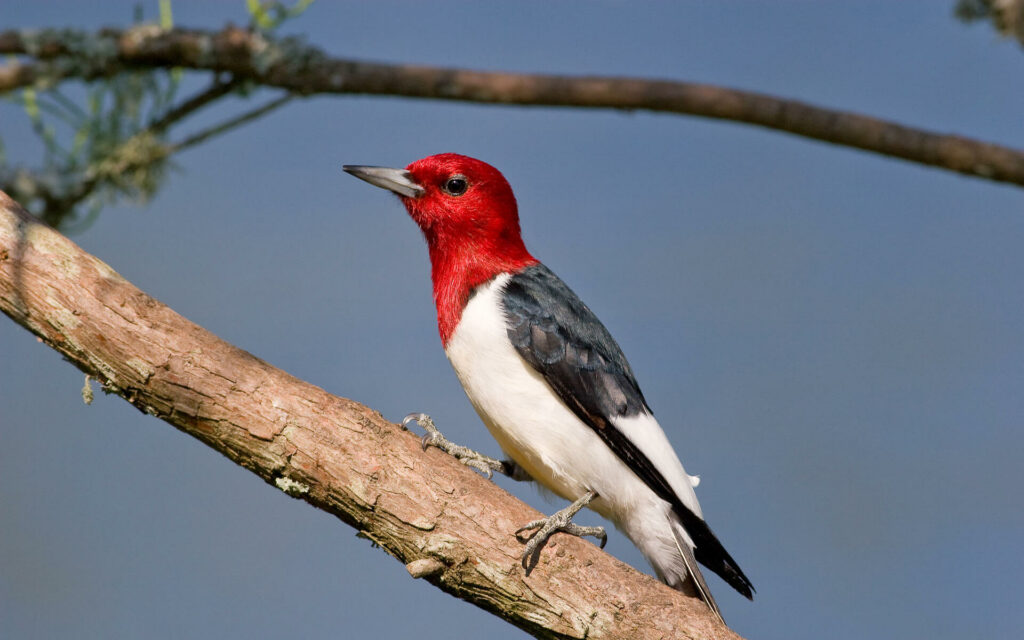
The Red-headed Woodpecker is among the most uncommon woodpecker across New England, breeding extremely seldom.
This nesting is rare sufficient that it is a really thrilling occurrence for state birdwatchers. Adults possess completely red heads, whilst youngsters exhibit brown heads.
Its eating habits are uncommon for a woodpecker in that it hides foodstuff in tree holes, frequently coating it with bark for later consumption. It also feeds in the wind, having the capacity to grab insects during mid-flight. They’re brightly patterned, readily identified, and quite active.
Red-headed Woodpeckers are attracted to wide pine forests, tree rows in farming areas, and standing wood among beaver wetlands and other marshes.
Once they’ve taken over this region, they’re very protective, even removing other species’ eggs from nests and puncturing duck eggs.
For generations, the Cherokee Indian battle emblem was the Red-headed Woodpecker as a result of this deed.
| Scientific name | Melanerpes erythrocephalus |
| Height | 7.6 to 9.8 inches |
| Weight | 2.1 to 3.5 ounces |
Check out this article on Types of Woodpeckers in Oklahoma and Types of Woodpeckers in Wisconsin.
Conclusion
You’ll be able to recognize the differences between the several kinds of woodpeckers across New England now that you’ve learned about them.
Please keep a look out for the Yellow-Bellied Sapsucker, Red-Bellied Woodpecker, and Red-Headed Woodpecker while you’re at it.
FAQ
What does the presence of a pileated woodpecker imply?
Woodpeckers, according to Native American traditions, signify the voyage into astral dimensions and are a symbol of messengers across the world. A Pileated Woodpecker appearing in your dreams might indicate increased fertility or production.
Do pileated woodpeckers migrate south during the winter?
Pileated woodpeckers are year-round residents that do not migrate. Whereas many wild birds migrate south for the wintertime, this unusual woodpecker remains close to home.
Last Updated on March 22, 2023 by Lily Aldrin
